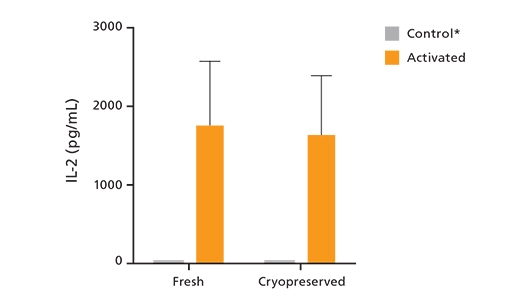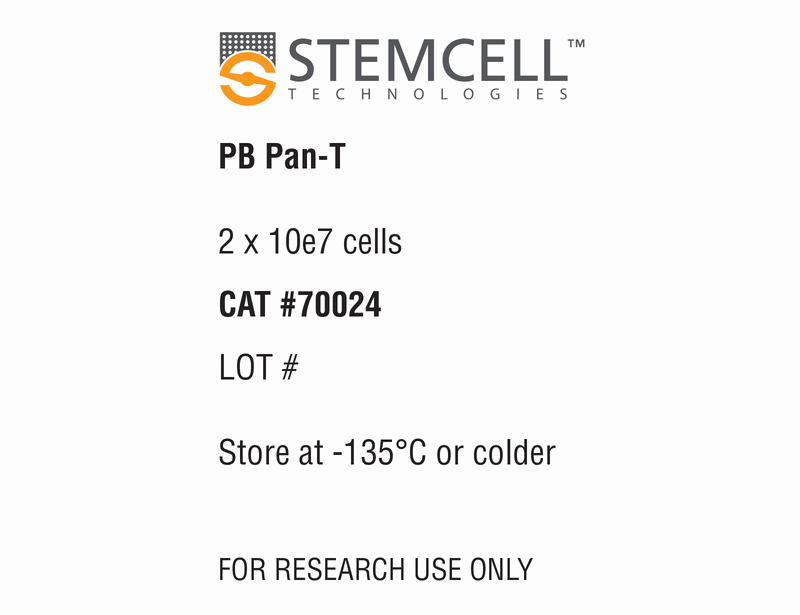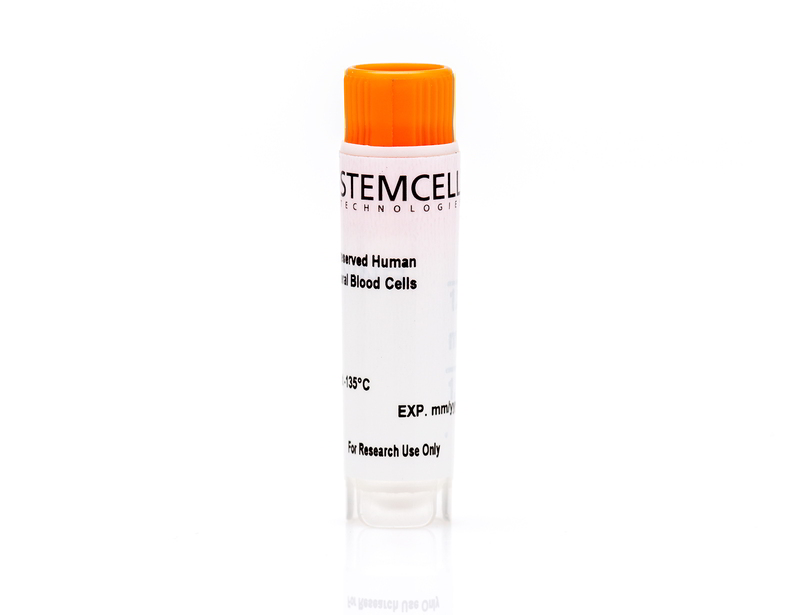概要
Cells were obtained using Institutional Review Board (IRB)-approved consent forms and protocols.
Certain products are only available in select territories. Please contact your local Sales representative or Product & Scientific Support at techsupport@stemcell.com for further information.
Browse our Frequently Asked Questions (FAQs) on Primary Cells.
技术资料
| Document Type | 产品名称 | Catalog # | Lot # | 语言 |
|---|---|---|---|---|
| Product Information Sheet | Human Peripheral Blood Pan-T Cells, Frozen | 70024, 70024.1 | All | English |
数据及文献
Data

Figure 1. Cryopreserved Pan-T Cells Secrete IL-2 Upon Activation
T cells freshly isolated from a Leukopak (Catalog #70500) using EasySep™ Human T Cell Isolation Kit (Catalog #17951) or cryopreserved Pan-T Cells (Catalog #70024) were cultured in ImmunoCult™-XF T Cell Expansion Medium (Catalog #10981) and incubated for 48 hours with or without ImmunoCult™ Human CD3/CD28 T Cell Activator (Catalog #10971). Freshly isolated and cryopreserved purified T cells secrete similar levels of IL-2 upon activation as measured using the Human IL-2 ELISA Kit (Catalog #02006). *IL-2 concentration of control in culture was lower than the limit of detection.

 网站首页
网站首页




